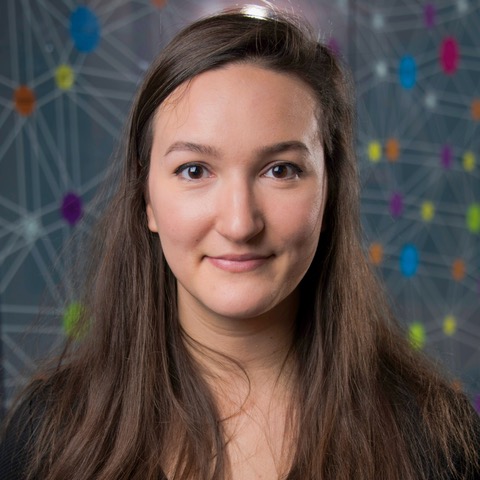
Dr. Jessica Royer, McGill University
Scientific publication
Royer, J., Larivière, S., Rodriguez-Cruces, R., Cabalo, D. G., Tavakol, S., Auer, H., Ngo, A., Park, B., Paquola, C., Smallwood, J., Jefferies, E., Caciagli, L., Bernasconi, A., Bernasconi, N., Frauscher, B., & Bernhardt, B. C. (2023). Cortical microstructural gradients capture memory network reorganization in temporal lobe epilepsy. Brain, 146(9), 3923-3937.
https://academic.oup.com/brain/article/146/9/3923/7134129?login=false
Memory network reorganization in temporal lobe epilepsy
Temporal lobe epilepsy is a common chronic neurological condition that is typically associated with altered structure and function of paralimbic brain regions. Temporal lobe epilepsy particularly affects episodic memory, which encodes information about past events and experiences. Research by Jessica Royer and colleagues identified memory network reorganization that could underpin these memory defects.
Memory difficulties significantly challenge quality of life for patients with temporal lobe epilepsy, underscoring the need to understand the neural mechanisms at play. Work by Jessica Royer and colleagues harnessed a novel approach to assess the microstructure of specific brain areas based on high-resolution magnetic resonance imaging (MRI). By comparing the microstructure in the brain of 21 patients and 35 healthy controls, they found alterations in paralimbic brain regions on the same side of the brain as the area where seizures initiated, and observed that the severity of these changes was associated with memory impairment.
The present work describes a novel view of the complex interplay between brain microarchitecture and memory. The authors used a disease model of memory dysfunction to grant insight into the neuroanatomical mechanisms of episodic memory. These findings highlight the importance of paralimbic microstructure to support functional memory networks and optimal recall performance. This flexible approach furthermore opens the way for investigations of structure-function associations beyond memory systems, and could be generalized to study the microarchitectural basis of diverse ensembles of cognitive abilities in different neurological disorders. In addition to this impact on fundamental research in brain science, this work also contributes to clinical perspectives and patient care in epilepsy.
Epilepsy is among the most prevalent chronic neurological disorders, affecting approximately 65 million individuals worldwide, and TLE in particular is one of the most common pharmaco-resistant epilepsies. A better understanding of this condition can measurably improve the lives of patients and their families by informing both diagnostics and prognostics.
Furthermore, this research localized microstructural changes in individual patients, which could lead to more precise identification of targets for curative surgery. Moreover, the distributed microanatomical substrates of episodic memory networks uncovered in this work offer novel investigation pathways to improve predictions of post-surgical outcomes.
About Dr. Jessica Royer
Dr. Jessica Royer performed this work as a PhD candidate in the laboratories of Boris Bernhardt and Birgit Frauscher, at McGill University. As a board-certified neuropsychologist, Jessica Royer is particularly interested in clarifying the interplay between brain structure and cognitive function, and how such structure-function relationships maybe be altered in neurological and psychiatric disease. Her work notably leverages focal epilepsy as a disease model to investigate the impact of lesions on large-scale brain function and cognitive abilities. As first author of this publication, Jessica Royer contributed to the study design, data collection, data curation, data processing, statistical analyses, figure conceptualization, manuscript writing and revisions, response to reviewers, and managing proofs for publication of the paper. In keeping with her strong commitment to open neuroscience, Jessica Royer also took charge of openly sharing post-processed patient and healthy control data collected as part of this study.
Sources of funding
Funding for this research was provided by the Canadian Institutes of Health Research (CIHR), the Natural Sciences and Engineering Research Council of Canada (NSERC), the SickKids Foundation, the Brain Canada Foundation, Helmholtz International BigBrain Analytics and Learning Laboratory (HIBALL), Fonds de Recherche du Québec—Santé (FRQS) and the Canada Research Chairs program.
